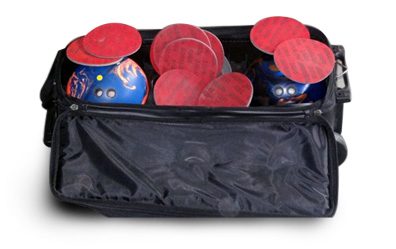Bowling Ball Drilling
Finger Tip Performance Ball
$71.06
- Custom fit hand to new ball
- Determine positive axis point for proper ball layouts
- Choose proper layout and surface for new ball
- Drill ball
- Grips & slug
Basic Conventional Grip Ball
$30.00
- Professionally fit your hand to the new ball
- Drill Ball
Plug & Redrill Whole Ball
$40.00
- Plug all holes in ball
- Return ball to factory surface
- Custom fit hand to the ball
- Drill Ball
Rejuvenate a Ball
$20.00
- Remove oil from a bowling ball to help bring back it's performance
- Great to do before a resurfacing of a ball
Resurface a Ball
$35
- Clean and resurfacing of a bowling ball will help bring it back to the desired reaction
- Choose the finish (sand or polish)
- Great to pair with the rejuvenation of a ball
Plug & Redrill Fingers
$20
- Plug the fingers only and redrill
- Great to pair new grips with this service
Plug & Redrill Thumb
$20
- Plug the thumb only and redrill
- New slug is included in this service
Other Bowling Services
Grips with a New Drilling
$14
Replacement Grips
$12
Slug
$15
Clean
$2
Polish
$3
Sand
$5
Cracked Bowling Balls by Jeff Ussery
In many areas of the country, we’re nearing that time of year where everyone starts talking about taking their bowling equipment out of the car when you’re done with league bowling. You may be new to bowling, or you may have never been informed as to why this is so important. It’s definitely a recommendation that protects your investment in your bowling equipment! Bowling balls should always be kept at room temperature because it helps to avoid inner and outer core separation. It also helps to prevent coverstock cracking and splitting. Bowling balls are made of different parts with different densities.
As these parts inside the ball adjust to the air temperature around them, they will shrink or expand with time. But manufacturers design your products to perform at their absolute top level, and to do that, they use different materials with different compositions and densities throughout the bowling balls. The result is a bowling ball with pieces that expand and contract at different
Read more about taking care of your equipment as the weather gets colder by Clicking here
Why You Should Resurface
Your Ball and How Often

The more you take care of your expensive bowling ball investment, the longer your balls will last and react how they're intended to.
We recommend resurfacing your ball every 60 games. That may sound like a lot but read on to see WHY you should do that!
Modern bowling balls have voids in the cover stock creating peaks and valleys think of the teeth of a saw blade. As the ball rolls down the lane the lane surface will wear down peaks and the lane oil will fill in the valleys. This will smooth out the cover and eventually make the ball stop hooking. It is recommended that every 60 games the ball be resurfaced and the oil extracted from the cover stock. By removing the oil and sanding the ball to a fresh surface it will restore the peaks and valleys allowing the ball to hook once again.
We have the Ball Surface Scanner to ensure we return the ball to it's original surface. Read more about the scanner by Clicking here
We have the Ball Surface Scanner to ensure we return the ball to it's original surface. Read more about the scanner by Clicking here
Bowling Ball Surface
Management
A bowling ball coverstock’s surface roughness is a key component of how, how much, and where it hooks on the lane. Using the proper surface finish for the conditions you are bowling on can literally mean the difference between success and failure in today’s game. Unfortunately, many bowlers who are trying to improve their games often ignore surface management. Here are some quick tips for better understanding this important topic.
- 1Don’t be afraid to experiment Many bowlers believe that a ball can’t be altered from its factory finish. This is simply not true. Manufacturers choose their factory finishes so that their balls will best suit the general bowling public. You should never be afraid to try different surface finishes to better tune a ball to your game and your bowling environment.
- 2Shiny / polished surface finishes: A polished surface will generally hook very little in the oiled part of the lane, saving most of its hook for the dry back end. Polished balls
generally have an angular change of direction downlane when they encounter dry boards. - 3Dull / sanded surface finishes A sanded surface will have more of a tendency to start hooking in the oiled portion of the lane. This tends to create a longer hook zone and a less angular back end motion.
- 4Know the rules The USBC does not allow surface adjustments after the start of play. That means all surface adjustments must be completed before the end of practice.Hopefully these tips will at least inspire you to learn more about how surface adjustments can be used to improve your game. Have a discussion with your pro shop operator about your balls’ surfaces…better matched ball surfaces just might be the thing you need to break through to the next level.Source: "Bowling Ball Surface Management" by Tyrel Rose (Bowling This Month)
